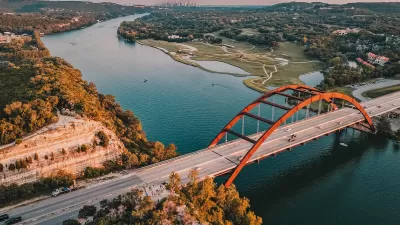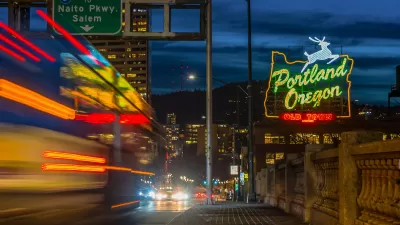Hillary Clinton recently proposed the creation of a national infrastructure bank—an idea also put forward several times by the Obama Administration. Posts by Vox and City Observatory put the idea under a microscope.
Matthew Yglesias (writing for Vox) and Joe Cortright (writing for City Observatory take different approaches to their analysis of an infrastructure policy that would rely on a national infrastructure bank for some of its funding capability.
Yglesias mostly provides an explanation of the concept by way of a larger infrastructure platform proposed by presidential candidate Hillary Clinton a few weeks ago.
After pointing out a few of the way infrastructure bank proposals can differ, Yglesias notes a common characteristic of all of them: "All flavors of infrastructure bank, however, are designed to solve a fundamental mismatch between which kinds of investors want to buy municipal bonds and which kinds of investors are best suited to invest in projects whose payoffs are very long-term."
As for "Clinton's particular flavor of infrastructure bank," according to Yglesias, it "would focus on projects of regional and national significance, emphasizing investments in complex multi-modal projects like freight and port improvements, and in projects to modernize our energy, water, broadband, and transportation systems in urban and rural communities."
Cortright, however, provides a clear polemic about the shortcomings of the national infrastructure bank model. Cortight's argument, summed up generally, is that there are several practical considerations that will limit the effectiveness of the infrastructure bank. Cortright goes into a lot more depth on each of the considerations listed here:
- A bank has to be capitalized.
- Banks want to be paid back.
- A bank may mostly substitute for existing financing rather than prompting additional investment.
- Banks don’t design projects, DOTs do.
- Cheap money creates its own incentive problems.
- And it’s not like states haven’t figured out how to borrow money.
Cortright concludes his argument by following up on that last point—most states are already deeply in debt for large infrastructure projects.
FULL STORY: Don’t bank on it

Planetizen Federal Action Tracker
A weekly monitor of how Trump’s orders and actions are impacting planners and planning in America.

San Francisco's School District Spent $105M To Build Affordable Housing for Teachers — And That's Just the Beginning
SFUSD joins a growing list of school districts using their land holdings to address housing affordability challenges faced by their own employees.

The Tiny, Adorable $7,000 Car Turning Japan Onto EVs
The single seat Mibot charges from a regular plug as quickly as an iPad, and is about half the price of an average EV.

As Trump Phases Out FEMA, Is It Time to Flee the Floodplains?
With less federal funding available for disaster relief efforts, the need to relocate at-risk communities is more urgent than ever.

With Protected Lanes, 460% More People Commute by Bike
For those needing more ammo, more data proving what we already knew is here.

In More Metros Than You’d Think, Suburbs are Now More Expensive Than the City
If you're moving to the burbs to save on square footage, data shows you should think again.
Urban Design for Planners 1: Software Tools
This six-course series explores essential urban design concepts using open source software and equips planners with the tools they need to participate fully in the urban design process.
Planning for Universal Design
Learn the tools for implementing Universal Design in planning regulations.
Smith Gee Studio
City of Charlotte
City of Camden Redevelopment Agency
City of Astoria
Transportation Research & Education Center (TREC) at Portland State University
US High Speed Rail Association
City of Camden Redevelopment Agency
Municipality of Princeton (NJ)





























